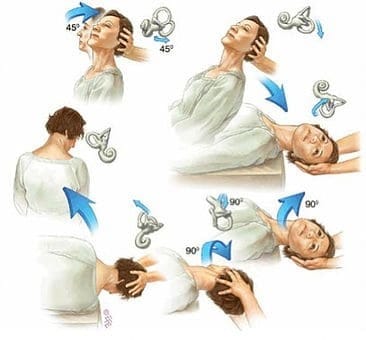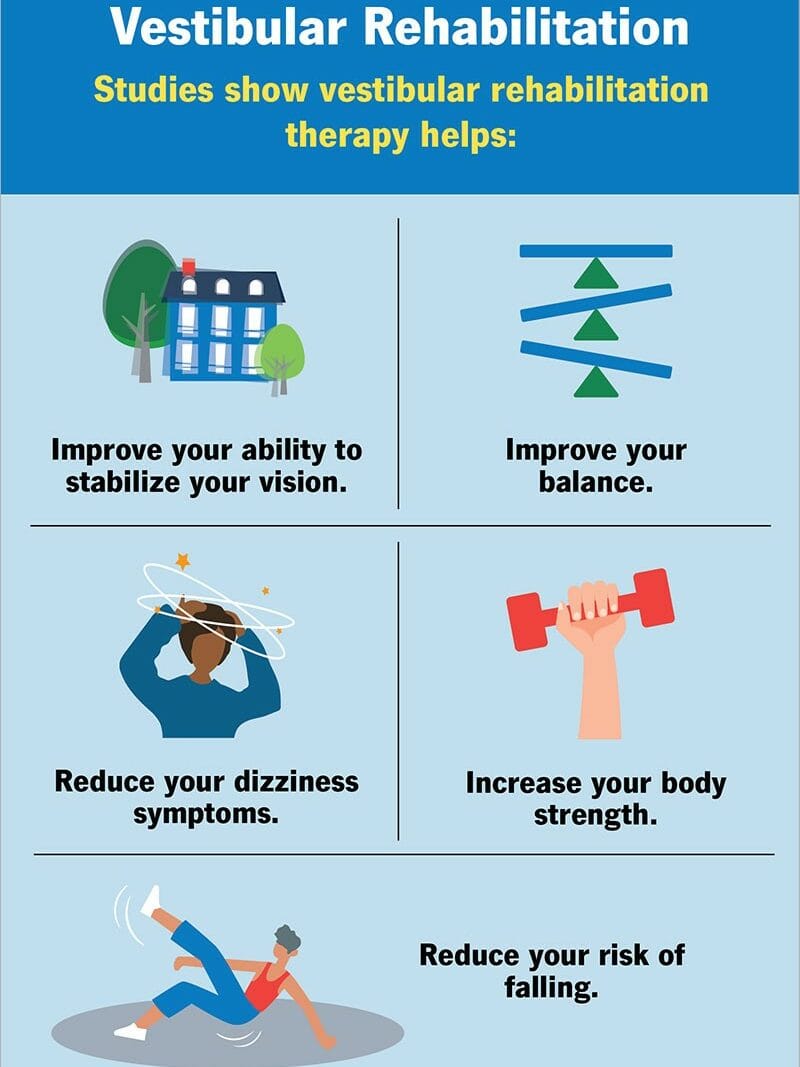Vertigo is a common vestibular disorder characterized by a sensation of spinning or dizziness, often accompanied by nausea, sweating, and balance problems. It can significantly impact daily life and lead to falls and injuries if not properly managed. While vertigo can have various underlying causes, including inner ear issues, vestibular migraines, and neurological conditions, physiotherapy can play a crucial role in managing symptoms and improving balance. In this article, we’ll explore some effective physiotherapy tips for individuals dealing with vertigo and how these exercises can help them regain their balance and quality of life.
Understanding Vertigo
Vertigo is a symptom rather than a condition itself and is often caused by disturbances in the inner ear or the vestibular system, which controls balance and spatial orientation. Common causes of vertigo include benign paroxysmal positional vertigo (BPPV), vestibular neuritis, Meniere’s disease, and vestibular migraines. Symptoms of vertigo can vary in severity and duration, ranging from mild, intermittent episodes to constant and debilitating dizziness. Vertigo signs such as dizziness, nausea, and imbalance can significantly affect daily activities and quality of life.
Physiotherapy for Vertigo
Physiotherapy for vertigo, known as Vestibular Rehabilitation Therapy (VRT), focuses on exercises and techniques to improve balance, reduce dizziness, and enhance vestibular function.

Vestibular Rehabilitation Therapy (VRT)
VRT is a specialized form of physiotherapy designed to improve balance and reduce vertigo symptoms through targeted exercises and maneuvers.
These exercises aim to promote adaptation and compensation within the vestibular system, helping the brain adjust to changes in balance and spatial orientation.
Common VRT exercises include gaze stabilization exercises, balance training, habituation exercises, and sensory integration techniques.
VRT is tailored to each individual’s specific needs and may include the following components:

Canalith Repositioning Maneuvers (CRM)
Canalith repositioning maneuvers, such as the Epley maneuver for BPPV, are effective in treating certain types of vertigo caused by displaced calcium crystals in the inner ear.
A trained and qualified physiotherapist can perform these maneuvers to help reposition the crystals and alleviate symptoms of dizziness and spinning.
Gaze Stabilization Exercises
Gaze stabilization exercises aim to improve visual focus and stability during head movements, which can help reduce dizziness and improve balance.
Examples of gaze stabilization exercises include tracking moving objects with the eyes or performing head movements while maintaining focus on a stationary target.
Balance Training
Balance training exercises help improve stability and reduce the risk of falls in individuals with vertigo.
These physiotherapy exercises for vertigo focus on improving proprioception, coordination, and postural control through activities such as standing on one leg, walking in tandem, and using balance boards or stability balls.
A physiotherapist can provide personalized balance training exercises tailored to the individual’s specific needs and level of impairment.
Vestibular Habituation Exercises
Habituation exercises involve gradually exposing individuals to movements or stimuli that provoke vertigo symptoms in a controlled manner.
Over time, repeated exposure helps desensitize the vestibular system and reduce the intensity and frequency of vertigo episodes.
Examples of habituation exercises include head movements, visual tracking exercises, and simulated motion activities.
Lifestyle Modifications
In addition to physiotherapy interventions, certain lifestyle modifications can help manage vertigo symptoms and improve overall quality of life. These may include avoiding triggers such as sudden head movements or excessive visual stimuli, practicing stress management techniques, staying hydrated, and maintaining a healthy diet and sleep routine.
Physical therapy, specifically vestibular rehabilitation therapy, offers valuable tools and techniques for individuals struggling with vertigo. By addressing underlying vestibular dysfunction and improving balance and stability, physical therapists empower individuals to regain their independence and confidence in daily activities. If you’re experiencing vertigo symptoms, consider consulting with a physical therapist at Physiotherapy Oakville trained in vestibular rehabilitation to develop a personalized treatment plan tailored to your needs. With the right guidance and support, relief from vertigo is within reach, allowing you to find your balance and reclaim your life.
Click here to book an appointment with a physiotherapist at one of our eight locations
- Physiotherapy Etobicoke – Triangle Physiotherapy Etobicoke
- Oakville Physiotherapy Clinic – Triangle Physiotherapy Oakville
- Physiotherapy North York – Triangle Physiotherapy North York
- Mississauga Physiotherapy Clinics – Triangle Physiotherapy Mississauga
- Downtown Physiotherapy Clinics – Triangle Physiotherapy King West
- Uptown Physiotherapy Clinics – Triangle Physiotherapy Lawrence Park
- Physiotherapy Clinic Downtown Toronto – Triangle Physiotherapy Queens Quay
- Physiotherapy Clinics Mississauga – Triangle Physiotherapy Erin Mills
Physiotherapy can be highly effective in managing vertigo and improving balance. If you’re looking for physiotherapy in Etobicoke, Oakville, North York, Toronto, Lawrence Park, Queens Quay, Erin Mills, Mississauga, or Liberty Village, there are experienced physiotherapists available to help you regain stability and enhance your quality of life.


